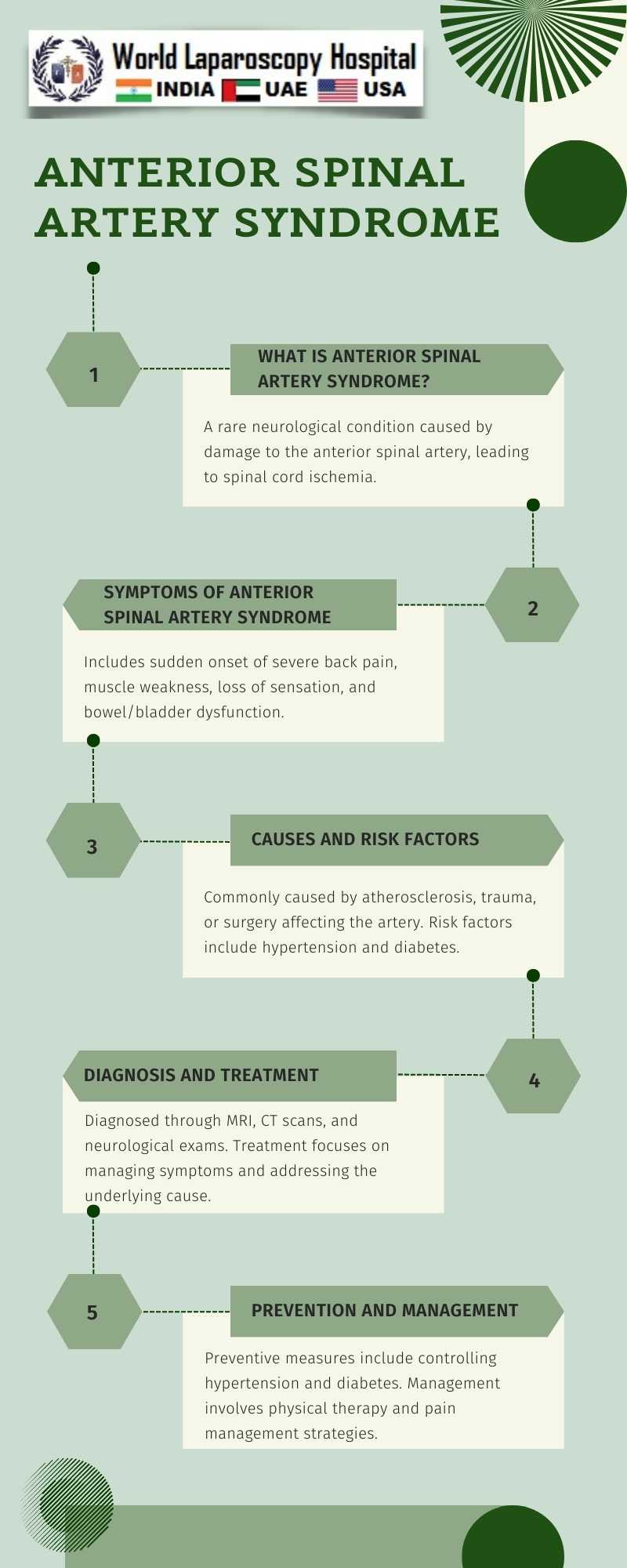
The spinal cord is a vital structure that plays a central role in transmitting signals between the brain and the rest of the body. It is supplied with blood by three main arteries: the anterior spinal artery and two posterior spinal arteries. The anterior spinal artery supplies the anterior two-thirds of the spinal cord, including the corticospinal tracts, spinothalamic tracts, and anterior horn cells. Disruption of blood flow in this artery can lead to significant neurological deficits.
There are several causes of anterior spinal artery syndrome. One of the most common is atherosclerosis, which can cause narrowing or blockage of the artery. Other causes include embolism from the heart or aorta, vasculitis, and trauma. Surgical interventions, particularly those involving the aorta or spinal column, can also increase the risk of anterior spinal artery syndrome. These procedures may disrupt blood flow to the artery or cause damage to the artery itself.
Patients with anterior spinal artery syndrome typically present with acute onset of neurological deficits, including weakness, sensory loss, and loss of bowel and bladder control. The exact presentation depends on the level of the spinal cord affected. For example, ischemia in the cervical region may lead to quadriplegia, while ischemia in the thoracic region may cause paraplegia.
Diagnosis of anterior spinal artery syndrome is based on clinical presentation, imaging studies such as magnetic resonance imaging (MRI) or computed tomography (CT) scans, and angiography to assess blood flow in the affected artery. Management of this condition focuses on restoring blood flow to the spinal cord and minimizing further damage. In cases where the syndrome occurs after surgical interventions, prompt recognition and management are crucial.
Preventive measures can help reduce the risk of anterior spinal artery syndrome in surgical patients. These include careful patient selection, meticulous surgical technique, and intraoperative monitoring of spinal cord perfusion. Additionally, early recognition of symptoms and prompt intervention can help improve outcomes in affected patients.
Conclusion:
Anterior spinal artery syndrome is a rare but serious condition that can occur spontaneously or as a complication of surgical interventions. Understanding the causes, symptoms, and management of this syndrome is essential for healthcare professionals, particularly surgeons, to minimize the risk of its occurrence and effectively manage affected patients. By implementing preventive measures and early intervention strategies, healthcare providers can improve outcomes and reduce the impact of this devastating condition.